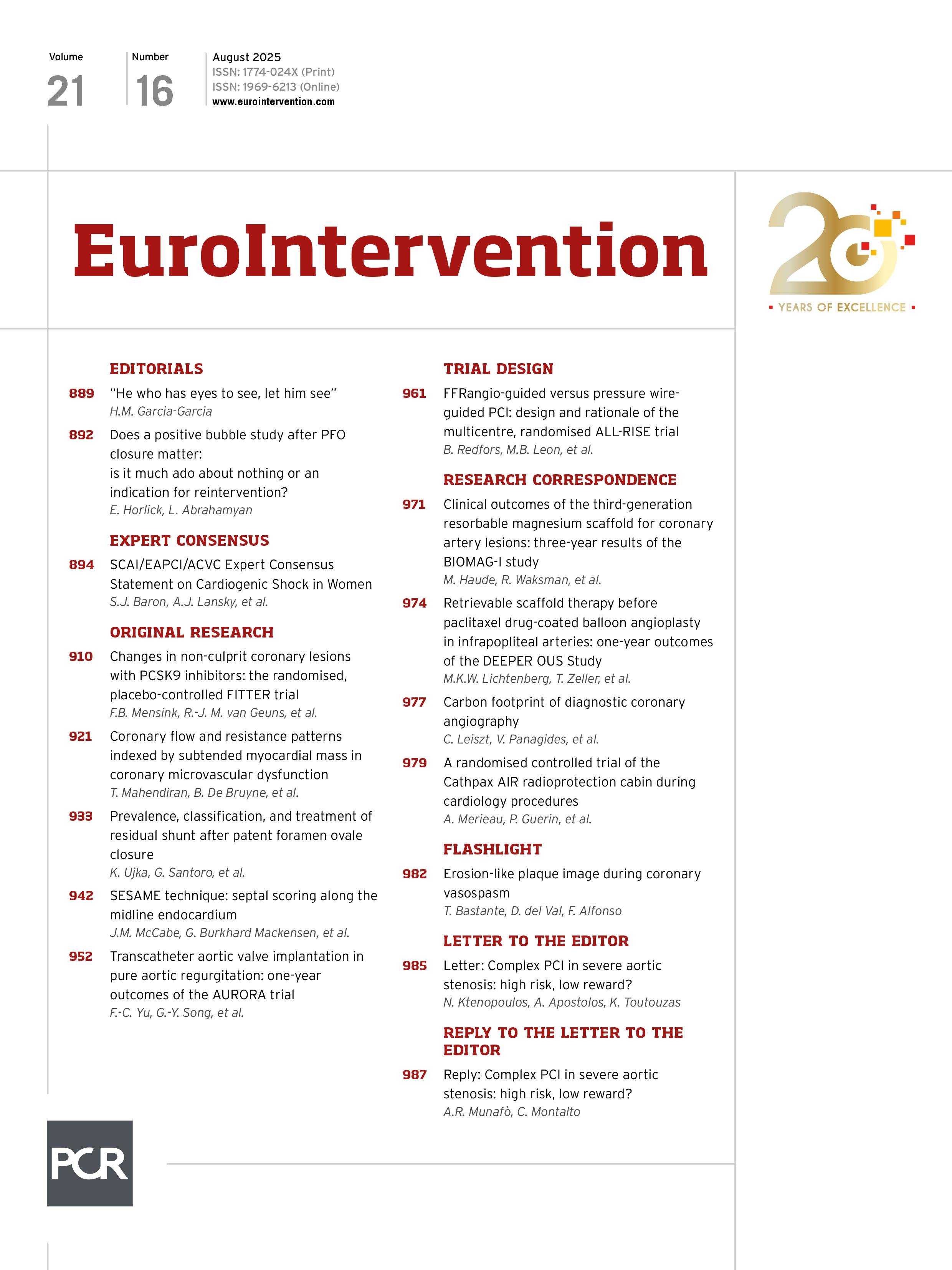Abstract
Background: Prolonged lipid-lowering therapy has demonstrated its ability to induce plaque regression and improve the plaque morphology of mild atherosclerotic lesions.
Aims: This trial aimed to assess the short-term effect of evolocumab in addition to high-intensity statin therapy (HIST) on relevant non-culprit coronary artery lesions using fractional flow reserve (FFR) measurements and multimodality intracoronary imaging.
Methods: Patients with an acute coronary syndrome (ACS) and relevant multivessel disease were randomised to receive either evolocumab or placebo for 12 weeks in addition to HIST. Patients underwent serial FFR and intravascular ultrasound (IVUS)-near-infrared spectroscopy imaging of a non-culprit vessel. The primary endpoints were the differences in the change in FFR and in the maximum lipid core burden index within any 4 mm segment (maxLCBI4mm). The secondary endpoints were the differences in the change in IVUS-derived atheroma volume parameters.
Results: Among 150 patients (mean age 64.2±8.5 years; 27 [18.0%] female) randomised to evolocumab (n=74) or placebo (n=76), 143 underwent follow-up coronary angiography. After 12 weeks of treatment, the adjusted mean change in FFR was 0.00 (95% confidence interval [CI]: −0.02 to 0.02) with evolocumab versus 0.01 (95% CI: −0.01 to 0.03) with placebo (adjusted mean difference: −0.01, 95% CI: −0.03 to 0.01; p=0.6). The adjusted mean change in the maxLCBI4mm was −27.8 (95% CI: −72.2 to 16.6) for evolocumab-treated patients versus −35.6 (95% CI: −82.5 to 11.4) for placebo-treated patients (adjusted mean difference: 7.8, 95% CI: −40.9 to 56.4; p=0.8). No between-group differences in any IVUS-derived parameter were found.
Conclusions: In patients with ACS and relevant non-culprit coronary artery lesions, the addition of evolocumab to HIST for 12 weeks, compared to placebo, did not result in improvement of FFR or maxLCBI4mm. (ClinicalTrials.gov: NCT04141579)
Sign up for free!
Join us for free and access thousands of articles from EuroIntervention, as well as presentations, videos, cases from PCRonline.com

